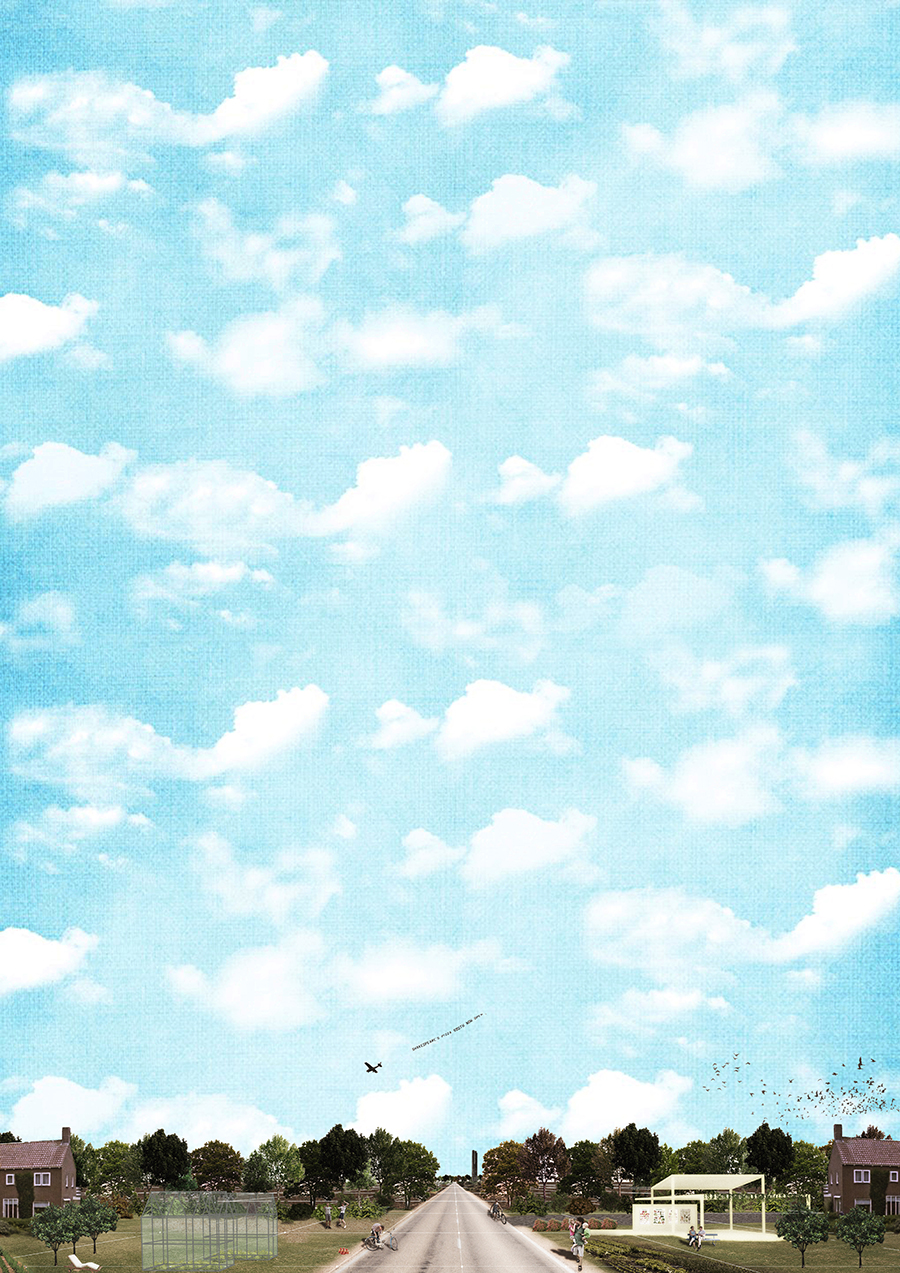

By introducing a system which repurposes a 20 meter deep strip of agricultural land adjacent to the road to become an area where smaller plots can be rented out for private agriculture, weekend homes and leisure time, a much needed fluctuation of people in the farm areas of Noordoostpolder is achieved. By allowing an opportunity for people outside the immediate farm area to periodically visit their small rented land gives the people of Noordoostpolder a chance to meet and socialize with new people on a temporary basis, without permanently imposing on their regular life cycle.
The same 20 meter strip is extended through the tree boxes as well, removing the tree barrier in its width and thus making the inner area more visible and attractive. On the plots themselves, a “transitional area” is formed which is implemented as an object which bridges the gap from public to private on the plots themselves. This area will consist of different programs and structures from sale and promotion of agricultural product, agricultural exhibition and education areas as well as areas for receiving guests and relaxing, food tasting, etc… Depending on the specific crop the farmer family produces and the time of year that this occurs, different areas of the polder could be more active than others which will introduce a much needed variety within the polder system.
By implementing a new, more flexible system into the rigid structure of the Noordoostpolder, new life possibilities arise which tends to improve the overall life of the existing occupants.




Noordoostpolder, 2014
